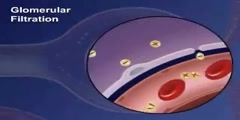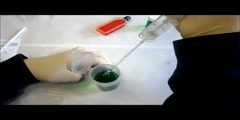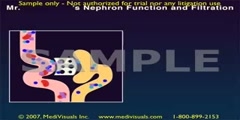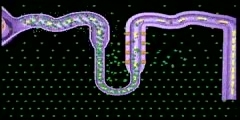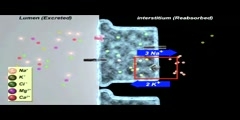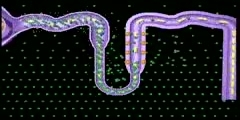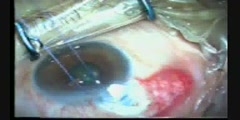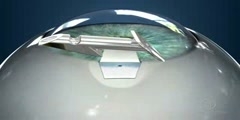Glomerular Filtration
A glomerulus is a capillary tuft surrounded by Bowman's capsule in nephrons of the vertebrate kidney. It receives its blood supply from an afferent arteriole of the renal circulation. Unlike most other capillary beds, the glomerulus drains into an efferent arteriole rather than a venule. The resistance of the arterioles results in high pressure in the glomerulus aiding the process of ultrafiltration where fluids and soluble materials in the blood are forced out of the capillaries and into Bowman's capsuleA glomerulus and its surrounding Bowman's capsule constitute a renal corpuscle, the basic filtration unit of the kidney. The rate at which blood is filtered through all of the glomeruli, and thus the measure of the overall renal function, is the glomerular filtration rate (GFR). The first place where urine is formed in the kidney, filters fluid from the blood. Afferent circulation The afferent arteriole that supplies the glomerulus is a branch off of an interlobular artery in the cortex. Layers If a substance can pass through the endothelial cells, glomerular basement membrane, and podocytes, then it is known as ultrafiltrate, and it enters lumen of proximal tubule. Otherwise, it returns through the efferent circulation, discussed below. Endothelial cells The endothelial cells of the glomerulus contain numerous pores (fenestrae) that, unlike those of other fenestrated capillaries, are not spanned by diaphragms. The cells have openings which are so large that nearly anything smaller than a red blood cell passes through that layer. Because of this, the endothelial cells lining the glomerulus are not usually considered part of the renal filtration barrier. Glomerular basement membrane The glomerular endothelium sits on a very thick (250-350 nm) glomerular basement membrane. It is not only uncharacteristically thick compared to most other basement membranes (40-60 nm), but it is also rich in negatively charged glycosaminoglycans such as heparan sulfate. The negatively-charged basement membrane repels negatively-charged proteins from the blood, helping to prevent their passage into Bowman's space. Podocytes Podocytes line the other side of the glomerular basement membrane and form part of the lining of Bowman's space. Podocytes form a tight interdigitating network of foot processes (pedicels) that control the filtration of proteins from the capillary lumen into Bowman's space. The space between adjacent podocyte foot processes is spanned by a slit diaphragm formed by several proteins including podocin and nephrin. In addition, foot processes have a negatively-charged coat (glycocalyx) that limits the filtration of negatively-charged molecules, such as serum albumin. The podocytes are sometimes considered the "visceral layer of Bowman's capsule", rather than part of the glomerulus. Intraglomerular mesangial cell Intraglomerular mesangial cells are found in the interstitium between endothelial cells of the glomerulus. They are not part of the filtration barrier but are specialized pericytes that participate indirectly in filtration.
Channels: Medical
Tags: Glomerular Filtration
Uploaded by: sikadi ( Send Message ) on 07-07-2009.
Duration: 2m 0s
